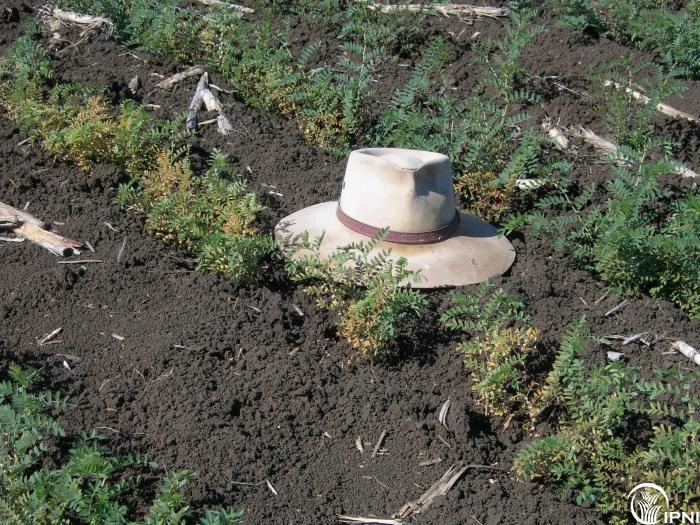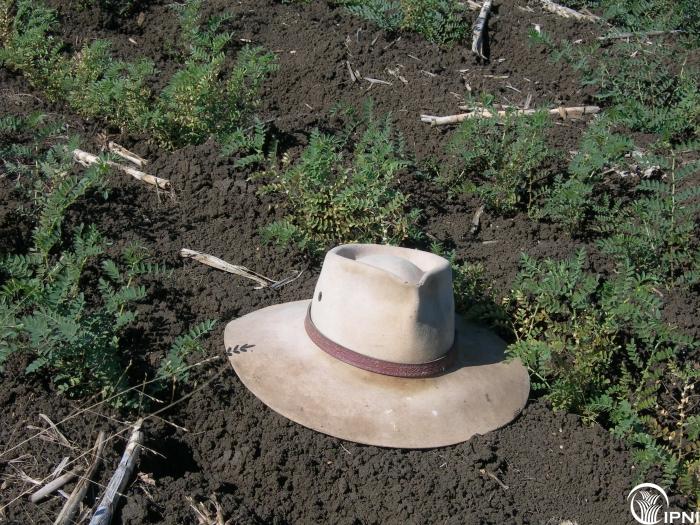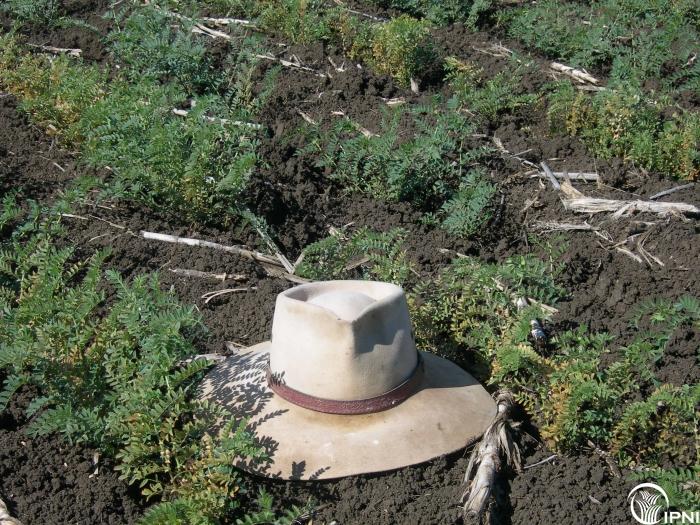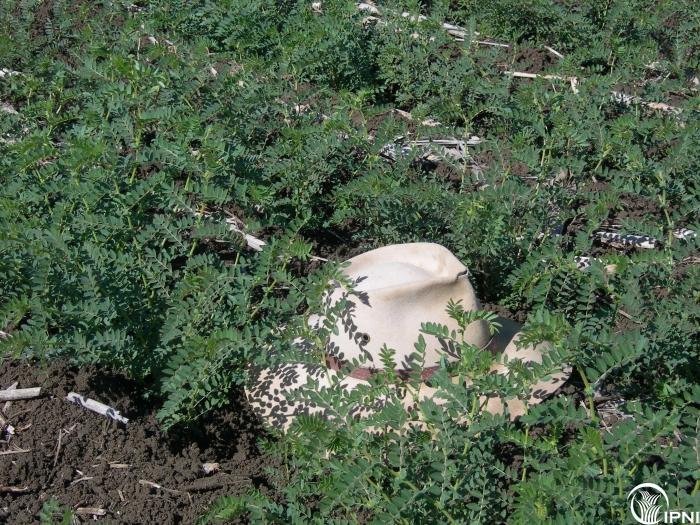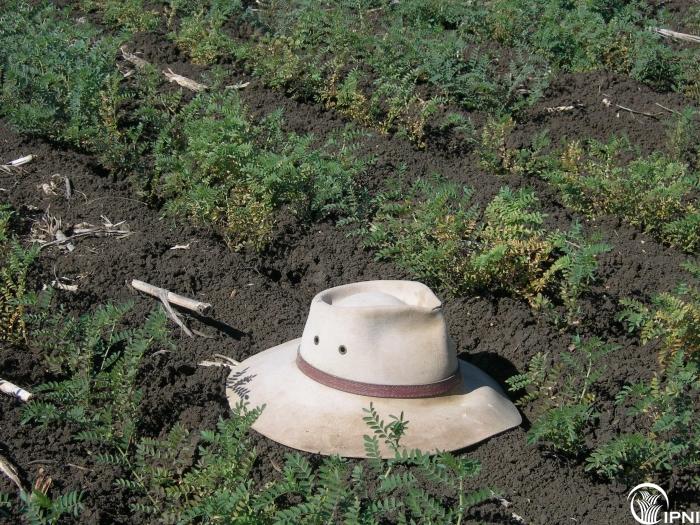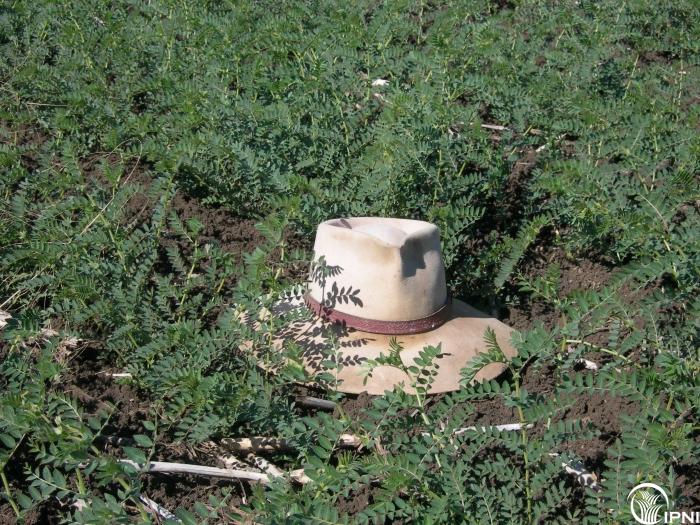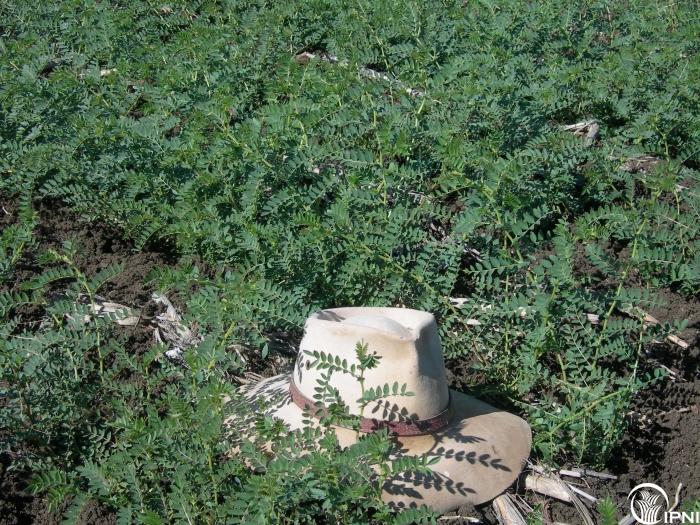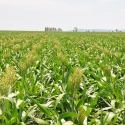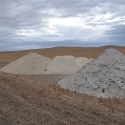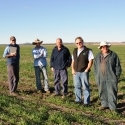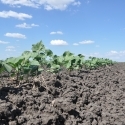12 Dec 2013
Potassium nutrition in CQ Cropping Systems
Responses to applied K on wheat and chickpea
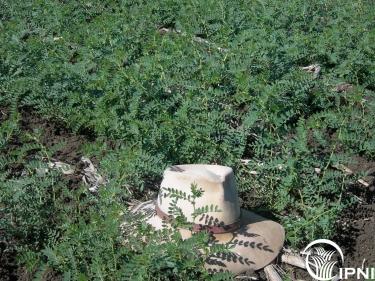 Chickpea - P and K and S.
Chickpea - P and K and S.
Nutrient limitations in summer cropping systems.
Two sites were established in central Queensland in 2012, one at Capella and the second at Gindee. Both sites had low P, K and S, especially in the subsoil layers. Both sites were characterised by low P, K and S, especially in the subsoil layers, although given the uncertainty of critical values in subsoils and the relative requirements of different crop species we were unsure which nutrients would be limiting yields.
We established trials by adding single nutrients (P or K or S) into the 10-30cm layer, or combined them (P and K, P and S, K and S, P and K and S). These sites were grown under commercial practice, through successive crops; sorghum (2012) and the chickpea (2013) at Gindee and chickpea (2012) and wheat (2013) at Capella. No additional fertilizers were added after sowing of the first year.
We have so far followed these sites, grown using typical commercial practice, through successive crops (sorghum-chickpea and wheat-chickpea at Gindie and Capella, respectively.
The results summary from over two years at the two sites show:
· In year 1 (a good year) both sites showed a 20% grain yield response to deep P. While no other nutrients affected grain yields there was a suggestion of an additive effect of deep K at Capella in chickpea biomass, There was no S response.
· In year 2 (much drier) the effects of deep P were still evident at both sites and the effects of K were clearly evident at Gindie. There was a suggestion of an additive P + K effect at Capella and a very significant additive effect of P + K at Gindie. This suggests that K availability with added P gave a 51% grain yield increase.
Results have differed between sites, and between crops at a site. In the initial crop year, with good moisture availability, both sites showed a 20% grain yield response to deep P. While no other nutrients affected grain yields there was a suggestion of an additive effect of deep K at Capella in chickpea biomass, but this did not translate into a yield difference. Despite low soil S, neither site responded to applied S at either site.
In the much drier 2013 season (no in-crop rainfall after planting), effects of deep P were still evident at both sites (14% in Gindie chickpeas and 8% in Capella wheat), but effects of K were clearly evident at Gindie, there was a suggestion of an additive P + K effect at Capella and a very significant additive effect of P + K at Gindie. The Gindie site was particularly interesting, as while the only nutrient limit at that site in the previous sorghum crop was P, the 2013 data suggest K availability was a greater limitation in the current chickpea crop (14% response to P but 27% response to K), while the additive effects of (residual) P and K were substantial (51% grain yield increase).
The reasons for the greater K response in 2013 could be related to seasonal conditions (no effective in-crop rainfall to allow access to shallow K reserves so that roots went deeper), crop species differences in K requirements (currently not known) or even agronomic factors such as crop row spacing (which influence available soil volume for root exploration).
These experiments show that as soil reserves decline, it is essential to apply the right combination of fertilizer nutrients to maximize crop productivity and this will make the best use of the seasonal water supply.
Figure 1. Responses to P, K or S fertiliser addition, singly or in combination, during the 2011 fallow period at two sites in Central Qld. Nutrients were applied in 20cm deep bands, each 50cm apart in 2012 only. Data are shown for grain yields in consecutive crops grown in 2012 and 2013.
These trial sites were established at Capella and Gindie in Central Queensland, with support from Canpotex and the International Plant Nutrition Institute (IPNI).
Additional Resources
Summary from Capella and GindeeSize: 1.23 MB

